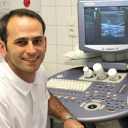
Specialists consider diffuse changes in the breast tissue as the initial stage of mastopathy. The condition is characterized by overgrowth of connective tissue with the formation of unformed lumps. This leads to changes in the structure of the ducts and surrounding tissues. But
especially dangerous is the fact that if there are provoking factors, the lumps are highly likely to change into tumors. For this reason, patients with fibrocystic breasts should regularly visit a doctor to undergo examinations.
What is it about?
Diffuse mastopathy is a mammary gland condition caused by hormonal imbalance, associated with a shift in the connective and epithelial component ratio. You can suspect the disorder by disturbing pains that occur in the second half of the menstrual cycle.
A consultation with a breast care provider, breast ultrasound and mammography are enough to make a diagnosis. Drug therapy is used in female patients, including hormone medications and plant-based medicines.
General information
Mastopathy is alteration of a particular type of tissue. Normally, the breast is made up of three tissue types:
- Glandular. Its function is producing milk. The cells of this tissue line the inside of the ducts.
- Connective. It serves as a framework of both the organ and its individual elements.
- Fatty. Makes the basis for the glandular layer and connective tissue components.
Normally, all three tissue types are present in a certain, unchanged ratio. With abnormal process, one or two tissue types start to proliferate.
As a result, single lesions can appear, which indicates a nodular form. The diffuse form is characterized by dispersed changes, that is, alterations that are present in all parts of the breast. The abnormal process can be both unilateral and bilateral.
It is important to distinguish diffuse changes from nodal ones, as this affects the disease prognosis and treatment strategy. In the case of doubt, you can seek a second opinion. Consultation with European doctors can be helpful in understanding the test results and choosing the correct therapy.
Classification
Depending on the nature of breast tissue changes, there are the following disease forms:
- Adenosis, when diffuse changes are accompanied by an overgrowth of the glandular layer.
- Fibroadenomatosis or changes in the breast tissues with a predominance of fibrous components.
- Diffuse, with cyst formation (cystic mastopathy).
- Mixed, combining signs of fibrosis and cysts (fibrocystic breasts).
- Sclerosing (with areas of sclerosis).
The form is determined by mammography findings. Also, depending on the volume of altered tissues, there are severe, very severe and moderate forms.
Diffuse cystic mastopathy causes
There is no single cause for the development of mastopathy. The hereditary factor, environmental influences and lifestyle may play a role. Of major importance is elevated estrogen levels and a lack of progesterone. In female patients whose closest relatives (mother, grandmother) had a history of breast diseases, the risk to develop mastopathy increases with hormonal imbalance.
The following issues in a female life can make the situation worse:
- dissatisfactory sex life;
- frequent conflicts;
- too much stress;
- dissatisfactory social status.
In addition to the above, mastopathy is more likely to occur in childless women, or in those who had a late childbirth, as well as in the case of frequent inflammations of the pelvic organs and long-term infertility therapy. It should be also noted that that trauma, mastitis, premature cessation of breastfeeding.
There is evidence suggesting that mastopathy risks are more than 7 times higher in women with a history of more than three abortions.
In addition to the above, the risks of breast disorders are increased by:
- alcohol addiction;
- radiation exposure;
- excessive tanning;
- living in large rural areas.
Worth of special mention are the factors that reduce the likelihood of mastopathy. These are early childbirth, long-time breastfeeding, as well as the use of oral contraceptives.
Diffuse mastopathy symptoms
The clinical presentation of a breast disease directly depends on the menstrual cycle phase. The main symptom is breast pain. As a rule, it occurs in the middle of the cycle or a little later. One can feel nagging or stabbing pains, spreading in the neck, shoulder, or under the shoulder blade.
The breast becomes evenly swollen. Lumps can be felt on palpation. Nipple discharge can occur as well. They can also grow in size a few days before menstruation.
When the discharge appears regularly, the pain weakens or disappears completely. At the same time, with pronounced changes, pains persist. They intensify with even a light skin touch. There is insomnia, anxiety, irritability.
Due to hormonal level changes, there may be a delay in menstruation, severe premenstrual syndrome, heavy menstrual bleeding, ovulation disorders. Associated diseases can include ovarian cysts, uterine fibromas, hyperplasia.
External changes are also possible. First of all, these may include dry skin, brittle nails, hair loss. These symptoms of mastopathy are manifested due to hormonal imbalance.
Diffuse mastitis diagnosis
The diagnosis of mastopathy is based on the results of breast examination by a a breast care provider, as well as ultrasound, mammography, MRI, and tissue biopsy findings. Laboratory blood tests are also mandatory.
There are no visual changes characteristic of mastopathy. In the course of palpation, one can detect lumps of various size and location. Most often they appear in the upper outer quadrant.
Specific signs of mastopathy are seen on ultrasound scans. There glandular layer appears thicker, there are structural duct and lobular septa changes, as well as uneven echo density in the entire breast. In cystic mastopathy one may see multiple small-sized lumps. In cystic fibrosis, there are changes both in the volume of fibrous tissue and the presence of cystic formations. Mammography findings may show inhomogeneous tissue, lumpy areas, cysts, or fiber bands.
If there is nipple discharge, ductography is needed to evaluate the ducts and exclude their disorders. Laboratory testing of the discharge is also necessary to exclude such conditions as tuberculosis, syphilis, actinomycosis.
In women with complaints concerning reproductive organs, laboratory blood tests are used to determine the level of thyroid, adrenal gland, and sex hormones, as well as to assess the level of liver enzymes. In addition, the patient is referred to a gynecologist and an endocrinologist.
Treatment of diffuse mastitis
In diffuse cystic mastopathy, conservative therapy with regular monitoring can be used. First of all, it is important to correct the diet to include a large amount of fibre and dairy products, as well as animal fats. In addition, vitamin and mineral supplements, diuretics to relieve oedema, sedatives, and enzymes can be administered.
Simultaneously with the treatment of mastitis is important to increase physical activity and get psychotherapy. Physiotherapy, including mud wraps, electrophoresis, magnetotherapy, laser, and mineral baths, has been proved effective.
If indicated, hormone therapy may be used. It is aimed at normalizing the hormone level and thyroid function. With severe pain, local administration of progesterone cremes is possible.
Second opinion
In diffuse mastopathy, seeing another specialist in addition to seeing your primary care physician may be necessary in a variety of circumstances.
Sometimes you may want to hear a second opinion if it seems that not all the necessary diagnostic procedures have been done, or, on the contrary, the recommended exam seems redundant.
But above all, an independent assessment by a good specialist is required if errors in therapeutic strategy are suspected. For example, that not all relevant complaints have been taken into account, or test results have been misinterpreted. If prescribed drugs do not give the desired effect. Or an operation is recommended, but you are not sure that is really necessary.
Finally, a reasonable reason for seeking a second opinion on benign breast changes is the thought that they may in fact be malignant. If it disturbs your peace of mind, be sure to find out the viewpoint of an expert you can trust. It is better to spend a little time and effort, but get to know for sure that a dangerous disease does not hide under the mask of harmless changes. Especially since now there are services that allow for remote breast care consultations. With just a few simple steps and without having to leave your home, you will receive a qualified assessment of your case and recommendations based on the most advanced medical knowledge.
References
- Benign Breast Conditions, Andrea M Bodine, 2017
- Benign breast disorders, Michaela Onstad, 2013
- Benign Breast Disease, Versha Pleasant, 2022


Comments — 0